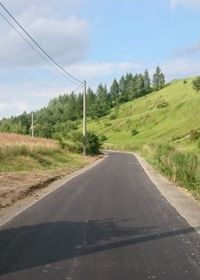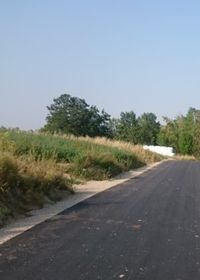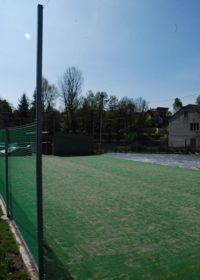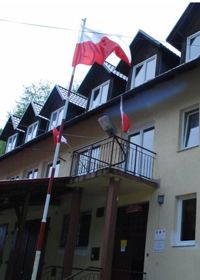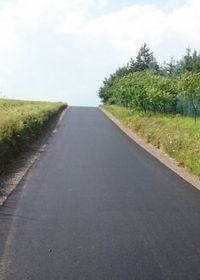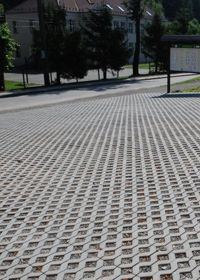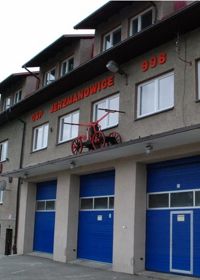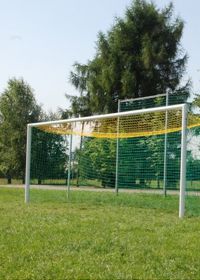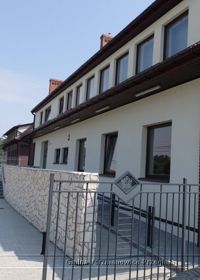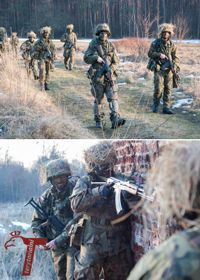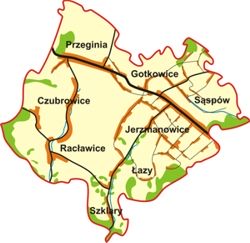Wprowadzono dodatkowe nazwy ulic prywatnych
- Szczegóły
- Kategoria: INFORMACJE
- Odsłony: 98386
Podczas sesji Rady Gminy Jerzmanowice – Przeginia w dniu 19 grudnia 2016 r. podjęta została uchwała nr XXIX/183/2016. Na jej podstawie wprowadzone zostały nazwy dla trzech prywatnych ulic w Jerzmanowicach tj. Malinowa, Sarni Stok, Pod Lasem. W załączeniu mapa która obrazuje wszystkie ulice, które będą obowiązywać od 31 stycznia 2017 r w miejscowości Jerzmanowice.
Podsumowanie I Dnia Seniora w Gminie Jerzmanowice-Przeginia
- Szczegóły
- Kategoria: INFORMACJE
- Odsłony: 73089
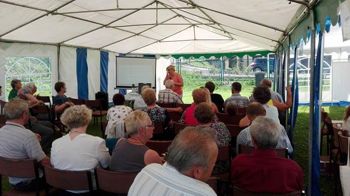 Podczas tegorocznych obchodów Nocy Świętojańskiej 25 czerwca br. w Gminie Jerzmanowice-Przeginia zorganizowano I Gminny Dzień Seniora. Okazał się on wydarzeniem, którego brakowało w krajobrazie imprez Gminy Jerzmanowice-Przeginia, najlepiej świadczy o tym liczba uczestników, którzy wzięli udział w specjalnie dla nich przygotowanym programie. Seniorzy mogli skorzystać z wielu atrakcji – wysłuchać wykładów zaproszonych gości, wziąć udział w badaniach oraz konsultacjach fizjoterapeutycznych oraz wyrobić ogólnopolską Kartę Seniora, której gminna edycja została zainaugurowana podczas I Gminnego Dnia Seniora.
Podczas tegorocznych obchodów Nocy Świętojańskiej 25 czerwca br. w Gminie Jerzmanowice-Przeginia zorganizowano I Gminny Dzień Seniora. Okazał się on wydarzeniem, którego brakowało w krajobrazie imprez Gminy Jerzmanowice-Przeginia, najlepiej świadczy o tym liczba uczestników, którzy wzięli udział w specjalnie dla nich przygotowanym programie. Seniorzy mogli skorzystać z wielu atrakcji – wysłuchać wykładów zaproszonych gości, wziąć udział w badaniach oraz konsultacjach fizjoterapeutycznych oraz wyrobić ogólnopolską Kartę Seniora, której gminna edycja została zainaugurowana podczas I Gminnego Dnia Seniora.
Szczególne podziękowania za pomoc w przygotowaniu tego wydarzenia należą się prelegentom, którzy zgodzili się wygłosić wykłady o tematyce zdrowotnej. Pierwszy wykład pt. "Żywienie w profilaktyce starzenia się organizmu" poprowadziła dr Beata Piórecka - pracownik Zakładu Żywienia Człowieka w Instytucie Zdrowia Publicznego Collegium Medicum Uniwersytetu Jagiellońskiego. Kolejną prelekcję pt. "Geriatria i gerontologia – co nas wyróżnia?" przygotowała i wygłosiła Paulina Zięba – ratownik medyczny i pielęgniarka, zatrudniona w Oddziale Stacjonarnym Medycyny Paliatywnej w Zakładzie Opiekuńczo-Leczniczym przy ul. Wielickiej w Krakowie. Ponadto Seniorzy wzięli udział w konkursie, w którym nagrodami były pakiety rehabilitacyjne ufundowane przez Centrum Rehabilitacji Vital-Med. Całemu wydarzeniu wsparcia merytorycznego udzieliła Fundacja Cardiovascular Center Foundation, dzięki któremu około 70 Seniorów otrzymało broszury edukacyjne pn. „Serce bez dymu” oraz „Życie po zawale”.
![]()
Ostaniec - special edition
- Szczegóły
- Kategoria: INFORMACJE
- Odsłony: 8393
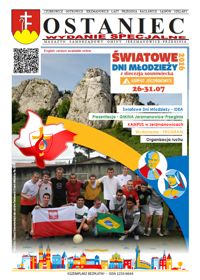 Rural commune Jerzmanowice – Przeginia properties are located in two metropolies – Cracow Archdiocese and Sosnowiec Diocese.
Rural commune Jerzmanowice – Przeginia properties are located in two metropolies – Cracow Archdiocese and Sosnowiec Diocese.
CRACOW ARCHDIOCESE
Incumbent archbishop Stanisław Dziwisz, whose predecessor was cardinal Franciszek Macharski is currently 76th in the role of diocese’s. shepherd. Born 27th April 1939 in Raba Wyżna as the son of Stanislaw and Zofia de domo Bielarczyk. After receiving six years training at a seminary, he was ordained a priest by the bishop Karol Wojtyła on 23rd June 1963 in the Wawel Cathedral.
SOSNOWIEC DIOCESE
The diocese is led by the bishop Grzegorz Kaszak. who was sent from Szczecin – Kamień Archdiocese. Being ordained a priest in 1989, the following year he started PhD studies in Rome at the Pontifical University of the Holy Cross maintained by Opus Dei foundation. He specialized in moral theology. He worked for The Pontifical Council for the Family, then he became a chancellor of the Pontifical Polish Ecclesiastical Institute. In the autumn of 2007 he was nominated to be a Secretary of The Pontifical Council for the Family. Grzegorz Kaszak was appointed Bishop of Sosnowiec on 4th February 2009, and his solemn ingress into the Sosnowiec Cathedral took place on 28th March 2009.
JERZMANOWICE-PRZEGINIA
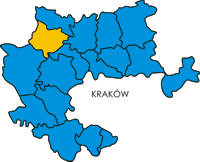 Jerzmanowice – Przeginia rural commune is situated within close reach to Krakow (approximately 20 km) and Ojców National Park. It has unique objects of inanimate nature such as rocks, rocky outliers as well as caves . Both existing nature and landscape values encourage to take up different types of physical activities.
Jerzmanowice – Przeginia rural commune is situated within close reach to Krakow (approximately 20 km) and Ojców National Park. It has unique objects of inanimate nature such as rocks, rocky outliers as well as caves . Both existing nature and landscape values encourage to take up different types of physical activities.
The area which covers Jerzmanowice - Przeginia rural commune is commonly called Krakow Upland. It is connected with limestones which are present in the majority of land and form a wide strip of land running from Krakow vicinity to the north in Częstochowa surroundings as far as Wieluń. All this piece of land is known as the Krakow – Częstochowa or Krakow Wieluń Upland, whereas geologists call it Polish Jura.
The rural commune lies entirely within Lesser Poland Voivodeship in Krakow County. It is divided into 8 units (villages) - Czubrowice, Gotkowice, Jerzmanowice, Łazy, Przeginia, Racławice, Sąspów and Szklary. The local council is located in Jerzmanowice - the central part of the commune.
Jerzmanowice – Przeginia commune has boundaries with Skała district in the east, Sułoszowa commune in the north, Olkusz district in the west. It also borders Krzeszowice district together with Wielka Wieś commune to the south.
Jerzmanowice – Przeginia rural commune is a perfect place to spend free time and relax actively, far from busy city life. Jurassic caves
- The Bat Cave
- Koziarnia Cave
- Dziewicza (Virgin) Cave
- Racławicka Cave (called Grzmiączka)
- Łabajowa Cave
- Szeroki (Wide) Aven Cave
- Wąski (Narrow) Aven Cave
- Kręta (Curvey) Cave
- Pod Kościołem (At the Church) Cave
- Sadlana Cave
There are also tourist trails within the area of Jerzmanowice- Przeginia commune
- 6 walking routes
- 4 cycle paths
- nordic walking trails
Nordic Walking Jurassic Upland Park (Nordic Walking Park na Jurze) – it is full name of the project launched by the Local Community Group ‘Jurassic Land’ (Jurajska Kraina), where our commune has its membership. Nordic walking comprises not only fitness walking but also using force to specially designed poles with each stride. This technique affects upper body muscles. Our community provides a network of trails regarding different lengths and difficulty levels.
Geotourism trail in Lesser Poland Voivodeship
Set up in 2006, it is a trail with 50 geological objects from Lesser Poland territory. Among them there are mostly rocky outliers as well as stone pits and valleys. Each place is numbered although the trail between landmarks has not been set yet. However, these points of interests are marked with display boards, which convey information about the objects located in each station.
Brodło - limestone rock
One of the distinguished points of Geotourism trail in Lesser Poland located in the eastern slope of the central part of the Szklarka Valley –a limestone rock called Brodło. It is 43 meters high.
Wooden Architecture Route in Lesser Poland
252 most valuable and interesting masterpieces of wooden architecture create Wooden Architecture Route in Lesser Poland.
Among other buildings listed on the route there are picturesque Roman – Catholic churches, as well as Orthodox ones; slender belfries, old Polish manor houses, wooden villas and heritage parks. All of them became the most valuable remnants of old Polish village life. The map of the route also contains a Parish Church of the Nativity of the Blessed Virgin Mary in Racławice.
Educational trail ‘Cave Valley’ (Jaskiniowa Dolina)
This trail is situated within the surroundings of the Jurassic Landscape Park called Krakow Valleys approximately 25 km north-west from Krakow in Jerzmanowice (by the Bat Cave), Geological trail is the first place to stop at the Educational Historic Nature Trail ’Cave Valley’.
Czubrowice The first written record comes from 1337. Czubrowice appears to have been mentioned together with Hanko, a village representative called sołtys from Czubrowice who occupied a position as an alderman of the Supreme Court of German Law at Krakow Castle, according to the Casimir the Great privilege from 1356. The original name from 1337 was De Czubrowicz but in the course of time it has been changed. Therefore, in 1400 it appears in documents as Czubrow, whereas in 1765 as Cubrowice. Finally, the contemporary name Czubrowice occurred in 1827. It is derived from patronymic name Czubr.
St. John Mary Vianney chapel in Czubrowice
Apart from nearby church in Racławice, the chapel in Czubrowice is also a worship place. Thanks to inhabitants’ generosity as well as the Chapel Building Committee efforts not to mention rev. Jan Latkowski it was managed to build the chapel. On 9th October 1988 during his parish visitation in Czubrowice, the bishop Jan Szkodoń held the Liturgy during which the chapel was blessed and consecrated. In 2001 the belfry was put up and the ‘St John Paul II’ bell was hung in the steeple.
The Czubrowice Calvary (The Way of the Cross)
The Czubrowice Calvary history dates back to 1985 when Jan Latowski, a parish priest from Racławice organized The Way of the Cross “Towards the Rocks” for the first time. It all happened with the active part of the teenagers from Apostolic Youth Group. The sculptures were made by Zdzisław Kościelniak from Raba Niżna.
Gallery Czubrowice:
Royal village Gotkowice, the smallest one in Jerzmanowice - Przeginia rural commune situated at the old Krakow- Olkusz –Silesia (Śląsk) route, dates back to 14th century. However, the first written record comes from the document of 20th March 1406 when the king Władysław Jagiełło conveyed his inherited properties (among them Gotkowice) to his secretary, knight Jan Mężyk, whose coat of arms was Wadwicz. From the beginning Gotkowice has belonged to the Jerzmanowice parish, existing from 1335.
A chapel in Gotkowice
In 1995, when the parish rector was rev. Józef Krzykawski the thing that came to people’s minds was to build a chapel in Gotkowice. Thanks to inhabitants’ donations building materials could be collected. A lot of labour was used to fulfill this project, all works were gratuitously given by the inhabitants, who established the Chapel Building Committee. Since 2nd November 2008 in the Saints Peter and Paul chapel the Mass has been celebrated each Sunday and in other feasts. The chapel is votive offering from inhabitants to thank The God for surviving historical disasters during 600 years of village history as well as for John Paul II’s pontificate.
Old cottage in Gotkowice
It is the example of the old cottage with characteristic form of wooden building construction in its latest stage.
Gallery Gotkowice:
Jerzmanowice is included in the group of villages existing in 13th century. The first written evidence about Jerzmanowice appeared in ‘Monumenta Poloniae Vaticana’ in 1335. It was information about the levy called Peter’s Pence paid from ‘Villa Hermani’ (Herman’s village). The village name is derived from Herman, a man who located the village. Several years later names ‘de Yrzmanouicz’ and ‘Irzmanouice’ are mentioned in documents. The changes are connected with making German name ‘Herman’ sound Polish ‘Jirzman’ or ‘Jerzman’ and in this way Villa Hermani became ‘Jirzmanowice’. It is proved by the note from 1406.
Parish in Jerzmanowice - St Bartholomew Apostle church
St Bartholomew Apostle church in Jerzmanowice was probably established in 1338. Religious worship meetings previously took place in a wooden temple from 1338, which was afterwards made from bricks (1827-1830). Later on, it was enlarged and rebuilt in 1876. Finally, on 21st June 1884 the Kielce bishop Tomasz Kukliński solemnly blessed and consecrated this church. In the church interior the Blessed Virgin Mary and St Bartholomew Apostle paintings are worth seeing.
St John the Baptist Hospital Church in Jerzmanowice
St John the Baptist Church (previously hospital church) is located within the parish premises. It was built thanks to Jan Sroczyński foundation in 1696. Sroczyński wanted to commemorate the king Jan III Sobieski’s victory at the battle of Vienna. St John the Baptist Chapel is the oldest building built in bricks not only in the parish, but also in the whole Jerzmanowice – Przeginia rural commune. It is also listed in the register of historic places in Poland. Since 2012 restoration works have been conducted thanks to the grant programme from Ministry of Culture and National Heritage ,Voivodeship Conservator of Monuments and Marshal Office in Krakow.
Jerzmanowice rocky outliers
They are singular and groups of limestones which can be found in the Olkusz Upland between the Będkowska and Szklarka Valley. They belong to the Jurassic Landscape Park ‘Krakow Valleys’ and these are Jerzmanowice properties. Most of the rocks rise from a few to about 20 metres above the surroundings. They have impressive shapes and at least some of the walls are very steep. Among many rocks there are: Ostry Kamień, Grodzisko, Wyjżoł (Skała 502), Wielka Skała, Skała Łaziska, Łysa Skała (Fiala), Jedlina, Sikorka, Psiklatka, Kozia Skała, Cielęca Skała, Słoneczne Skały, Witkowe Skały.
The Bat Cave
The Bat Cave is a great tourist attraction of both, the village and the region, together with the remains of the Paleolithic Age. It was also called Jerzmanowice, Priest or White Cave. The name comes from bats’ remains as well as species nowadays existing in the cave. The Bat Cave, situated in the group of rocks in the northern part of the Będkowska Valley, lies in altitude 447 metres above sea level (asl). Being 306 metres long, it is one of the biggest caves in the Krakow- Częstochowa Upland.
Gallery Jerzmanowice:
Łazy is the youngest of all commune villages . The name ‘Łazy‘ appears for the first time in ‘Liber beneficiorum diocesis Cracoviensis’ by Jan Długosz from 1470-1480. It is a culture name which means deforestation, pulling stumps or setting on fire in order to get agricultural field. The next record ‘Łazi’ comes from 1581 according to the study entitled ‘ Geographical and statistical aspects of 16th century Poland’. (Polska XVI w. pod względem geograficzno statystycznym).
The chapel in Łazy
Thanks to rev. Józef Krzykawski‘s efforts, the dream to build a chapel in Łazy came true. It was votive offering from inhabitants to thank The God for surviving death during the pacification action in Łazy by German soldiers. The Chapel Building Committee was established by inhabitants. On 9th October the notarial deed of exchange 75 ares of land was signed. As soon as July 1981 on the pacification action anniversary, the Mass was celebrated and a blessed cross was stood in the place of future building site. On 10th June 1984 the chapel was consecrated by the Kielce bishop PhD Stanisław Szymecki. At the same time a commemorative plaque (blessed by Pope John Paul II) was attached to a wall.
The Manor in Łazy– The Youth Hostel at present
It is the only preserved manor house within the commune area. The building is typical for the between-wars period. It is connected with the Manor – Style and picturesque details of the National – Style architecture. Nowadays it houses the School Youth Hostel maintained by The Krakow County.
The memorial commemorating the victims of the pacification action in Łazy
The memorable day of 16th July 1943 at dawn about 4-5 am German soldiers column of about 500 Gestapo, Wehrmacht soldiers together with Feldgendarmerie unit armed with machine guns and howitzers surrounded the village. At the same time they searched the forest together with the aircraft patrol. After World War II concluded, at the site of pacification the monument made from black marble was founded by inhabitants. They decided to commemorate the hero-victims of the pacification action etching the description ‘TO NEXT GENERATIONS’.
Gallery Łazy:
The first written record about the oldest village in the commune comes from the bishop Iwo Odrowąż’s document of 29th September 1228 addressed to the Imbramowice monastery. It concerned the tithe for the Norbertine Sisters from the land between Przeginia and Trzyciąż. Przeginia was located by the important trade route from Krakow via Olkusz and Sławków towards Silesia (Śląsk). At first it was prince’s property, then monarch’s one – formally in 1422. After the World War II Przeginia belonged to the Sułoszowa rural commune; in 1950 the Przeginia rural commune was established, and the villages Jerzmanowice, Racławice, Czubrowice, Łazy, Gotkowice, Szklary and Sąspów were a part of it. The changes of 1954 resulted in changing communes into clusters (gromady) That way Przeginia became independent cluster and in 1961 Racławice and Czubrowice were joined to it. In 1973 it became a rural commune again, 2 years later both communes Przeginia and Jerzmanowice were connected together. This is how the Jerzmanowice-Przeginia rural commune including 8 villages was created.
Christ the Saviour Sanctuary in Przeginia
Christ the Saviour church parish in Przeginia was probably set up in 1325. The original wooden church was built in 1325-1327 and next, built in bricks, in 1662 by Michał Zebrzydowski foundation. The present one, thoroughly rebuilt in 1902-1908, was solemnly blessed and consecrated by the Kielce bishop Augustyn Łosiński. On 23rd September 2003 the Sosnowiec bishop Adam Śmigielski decided to designate the church as a shrine. The picture of suffering, merciful Christ is particularly worshipped. by numerous pilgrims who have come to visit it for ages. In the church interior Neo-Gothic furnishings and the worshipped picture of Suffering, Merciful Christ from 16th century are worth seeing.
Gallery Przeginia:
Racławice was located on Magdeburg Law probably at the end of 13th century, whereas the first written record of the village and parish comes from 1325. Racławice is derived from patronymic name Radsław. It was once king’s property and belonged to Rabsztyn county and Krakow Voivodeship.
Parish in Racławice - the Nativity of the Blessed Virgin Mary Church in Racławice
Parish in Racławice originally belonged to Prandocin then to Nowa Góra deanery. Apart from Racławice, also Czubrowice, Szklary and Zawada were included in the parish. Contemporary Late Gothic wooden church comes from 1511. It remained almost unchanged until present times, only at the turn of 17th and 18th centuries during renovation works the belfry was added. Next preservation works were carried out in 1950s and 1960s whereas polychrome was restored in 2000. In the church interior some Gothic carpenter details can be admired. The portal of the door leading to the vestry includes the pointed arch and the door itself are possessed with the grating. Two other portals and window frames are surmounted by ogee arches. The walls are covered by Renaissance polychrome dated back to the half of 17th century, which presents the Passion, St. Mary’s scenes and images of Saints.
Gallery Racławice:
The earliest documentary evidence concerning Sąspów was in 1325 – 1327, in Monumenta Poloniae Vaticana. The village is then mentioned as De Samspowa. The vicar called Bratko paid the levy called Peter’s Pence from this area. In 1351 Francko de Sanspów appears in the document and Jan Długosz uses the name ‘Sansow‘ in his ‘Liber beneficiorum diocesis Cracoviensis’ from 1470-1480. It was not until 1680 that the name Sąspów was in ‘The Conscription Register of Krakow Voivodeship’ (‘Rejestr poborowy województwa krakowskiego’). Sąspów is derived from pra – Slavic topographic name. In contemporary language Sąspów can mean ‘adjacent mounds’. Sąspów is situated within the area of the Jurassic Landscape Park ‘Krakow Valleys’ in the Sąspowska Valley, where the Sąspówka creek which flows into Prądnik river has its origin.
Parish in Sąspów - St Catherine church
Originally wooden church built around 1314 which remained until 18th century. In 1740 thanks to faithful parish members’ efforts as well as rev. Andrzej Gogulski’s support a new church made from bricks could be built It was consecrated by the Krakow bishop Andrzej Gawroński in 1780. In the church interior Baroque furnishings, the main altar with the picture of Our Lady of the Snows and the side – altars are worth seeing. In the parish area in 1995 the Divine Mercy Chapel in Wola Kalinowska was built and on 1st October 1995 consecrated by the Sosnowiec bishop Adam Śmigielski.
The Sąspówka Valley
It is the second – largest valley in The Ojców National Park, which is a strict nature reserve. Its middle and lower part within the area of the national park is 5 kilometres long, The Sąspówka creek –the right tributary of the river Prądnik runs through the bottom of the valley. It is almost non – built – up area, only in upper part some houses are scattered. The Sąspówka creek is recognized as a place of pride, due to exceptionally clean water (first class of purity). A lot of springs flow towards the creek, among them there are Harcerz, Spod Graba, Ruskie, W. Filipowski springs. Crenobia alpina (wypławek alpejski) occurs in the Harcerz (Scout) spring. It is a relic from the ice age. Beavers were introduced to the Sąspówka creek in 1985. The flat bottom is occupied by meadows, whereas both slopes are covered by forest with numerous limestones. As many as 164 caves in the limestones can be found in the valley. Notable ones are Sąspowska and Koziarnia Caves. There are also some minor gorges: Koziarnia, Słupianki, Jamki, Pradła, Puklowiec, Błotny Dół. There are also the Chmielewski Rocks, located at the mouth of the ravine.
The Koziarnia Villa - the Seismological Observatory
The building is typical for the between-wars period. It is connected with the Manor – Style and picturesque details of the National – Style architecture. Inside it there is the Seismological Observatory. Its location is connected with lack of interferences coming from urban places. It is within the distance of 30 kilometres to the centre of Cracow. The city traffic which disturbs the work of devices made the Institute of Geophysics, Polish Academy of Sciences move the seismic station from the Wawel Hill to a tranquil valley in the Ojców National Park.
Gallery Sąspów:
In the course of time the name of the village was transformed, from the oldest one ‘Śćklary’, then ‘Sczklary’ mentioned in 1400 and later the phrase ‘do granicze do sklarskey’ was used. In 1525 the name sounds ‘Sczklary’ and in 1581 ‘Skliari’. Not until 1680 that the contemporary name Szklary appeared. Szklary is the ancillary name. The first records come from 1400 and 1416 when the village representative (sołtys) was Jakusz Latoszek. Four peasants were also mentioned at that time: Loska, Jośka, Arnold and Marcin. The village covered the area of 7.5 łan of land (this is Old – Polish measure). At the end of 14th century the owners of Szklary were ordinary knights until 1434 when Jan Pilecki included it in his properties. However, before 1470 Szklary was part of the king’s possession.
Parish in Szklary - St. Maximilian Kolbe church
Through the ages, Szklary belonged to the Racławice parish together with Czubrowice and Zawada. Long –awaited parish was set up in 1974. On 18th August 1974 Karol Wojtyła, the Metropolitan Bishop of Krakow at that time, held the first Liturgy. It was offered for Szklary inhabitants’ intention, especially for the women who defending the building for religious instruction (punkt katechetyczny) were ill treated by ZOMO and ORMO (paramilitary – police formations) units. The St Maximilian Kolbe church’s foundation document comes from 1987, whereas the church was built in 1990 -1994 according to the project of Eng. PhD. Przemysław Gawor. This church was solemnly blessed by Cardinal Franciszek Macharski. While the inhabitants were making efforts to build a church the future Pope cardinal Karol Wojtyła attended the place three times. It’s no wonder that the statue of Pope John Paul II is located in front of the church, as well as the grotto with the statue of Our Lady of Lourdes and the Black Madonna of Częstochowa huge paining.
The Szklarka Valley
The valley of the Szklarka stream in the Krakow- Częstochowa Upland is located within the area of the Jurassic Landscape Park ‘Krakow Valleys’ Being 9 kilometres long it stretches from Jerzmanowice through Szklary as far as Dubie. It is characterized by wooded slopes with numerous limestones and outliers. A lot of outliers can also be spotted in the open area of agricultural fields (so – called Jerzmanowice outliers). Among the outliers the biggest ones are : Witkowe Sokoliki, Łysa Skała, Chochołowe Skały, Cisówki, Bukowa Góra together with Ciasny AwenCave , Szeroki Awen Cave , Wilisowe Skały, Lisia Jama. Some of them are used as training places for rock – climbers. Caves located in limestone (e.g. Kręta Cave) are a great attraction for cavers. At the mouth of the valley a few fishing ponds, set up in 1850 by the Potocki family, are located. Nowadays trouts and other Salmonidae are bred there. There are three tourist trails within the area of the Szklarka Valley.
The Monument to the 1863 January Uprisers
On 5th April 1863 the colonel Józef Grekowicz’s troop had a clash with Russians. To commemorate this event the monument was built in the hill called Hołda. It was unveiled and blessed on 11th November 2005.
Brodło - limestone rock
Brodło is the highest peak in Szklary with the relative altitude is 43 meters. It rises above the church in Szklary In the Krakow Valleys Brodło is one of the highest climbing rocks, so is available for rock - climbing.
Gallery Szklary:
Village Women’s Club in Czubrowice
It was officially set up in 1965. The club is busy with cherishing old traditions and passing them on to the next generation. In 2004 the club was rejuvenated. It takes the active part in local and commune ceremonies and harvest festivals. The women’s club is also involved in the harvest wreath competitions, Christmas Nativity plays, it organizes the Christmas wafer – which has already become well-known tradition. It can be seen during similar ceremony but at the commune level. Among other activities there are also “Cecyliada” - “St Cecilia’s day “when they sing traditional folk songs, “St John’s Eve” (Noc Świętojańska), “Evening of the Independence” on 11th November, Farewell Summer Festival and a lot more. In 1982 some of the members gathered and decided to start a band called ‘ Czubrowiacy’.
Village Women’s Club in Gotkowice
The history of the club dates back to 1940s and 50s. The women from the village were associated in the club called ‘ Women’s League’. The Village Women’s Club was set up in 1963. Its members organized dancing evenings, often connected with poultry plucking The local firefighters were frequently invited. The members of the club had been busy with preparing the celebration of ‘600 years of village history’. Every year the Village Women’s Club prepares harvest wreath for parish or diocese harvest festivals. It also takes the active part in preparations to celebrate ‘St John’s Eve’ and ‘Evening of the Independence’ on 11th November.
Village Women’s Club from Jerzmanowice
The club’s basic activity is voluntary work. Cherishing old folk traditions plays the important role in it. It happens through singing old folk songs and couplets and this way they are protected from oblivion. Mini – concerts taking place in church are very popular among inhabitants, e.g. the one organized on the 2nd anniversary of John Paul’s death. The members’ achievements were also presented during Days of the District (Dni Powiatu) and the Agro – Krak exhibition.
Village Women’s Club in Łazy
Village Women’s Club in Łazy was set up in 1933 and worked until the beginning of the World War II. In renewed its activity in 1946. During social changes after war, like many organizations, the club was suspended. It restarted in 2003 and nowadays the women take part in harvest festivals at the rural commune, county district or diocese levels, making harvest or Christmas wreaths as well as floral decorations. They also cooperate with Voluntary Fire Brigade from Łazy and take local successful initiatives, e.g. the annual fete. The profit from the fete was devoted to build a chapel. Another initiative was an attempt to revive old custom of singing Mother Mary Christian songs at the roadside chapels in May. According to the tradition the women from the club also get together on special occasions such as Women’s Day, Fat Thursday, St Andrew’s Day, not to mention organizing bonfires. They also take the active part in preparing ‘St John’s Eve’, ‘Evening of the Independence’ on 11th November.
Village Women’s Club in Przeginia
From oral tradition as well as school chronicle information, we could find out that the origins of the Village Women’s Club in Przeginia date back to 1920s or 1930s. It is proved that in 1929 the Agricultural Club was set up. It is commonly known that according to the club charters Village Women’s Clubs were established at the same time. The club in Przeginia takes the active part in parish festivals . Cherishing old traditions, the women wear traditional old costumes, they accompany the processions during parish indulgences, the Feast of Corpus Christi, Easter, they also make harvest wreath. The club members gather at the Jesus’ tomb in church on Good Friday. For a few years they have prepared ‘a palm’ – several metres long with hand-made flowers for Palm Sunday. They also gather to sing Mother Mary Christian songs at the roadside chapel in May. Singing plays the important role in the club’s activity. In their collection of songs there are folk couplets, harvest songs, excerpts from a peasant wedding and gorgeous old shepherds’ songs.
Village Women’s Club in Racławice
Contemporary Village Women’s Club was established in 2004, continuing local traditions handed down from older generation of Village women, whose activity fell on the years of Communist as well as Independent Poland. The women celebrate together Women’s Day, take care of priests and war heroes graves. Every year the Village Women’s Club helps the Local Initiatives Committee from Racławice to prepare annual fetes, especially ‘a Feast of Countrywoman’ (Święto Baby), ‘St John’s Eve’, ‘Evening of the Independence’ on 11th November or 100th anniversary of First Cadre Company march out. (We, the First Brigade song). The festivals- goers can taste delicious treats prepared by the club members. The club also took part in harvest festivals carrying hand-made wreaths. In 2006 the Village Women’s Club promoted Jerzmanowice – Przeginia commune and Racławice itself during Agro – Krak exhibition. The club members were proud to present their needlework.
Village Women’s Club in Sąspów
It was officially set up in 1960 although started its activity a few years earlier. It was a vivid club counting 40 members, busy in different fields. In 1984 a folk band was created and soon was successful. The women took part in many competitions and were highly estimated for their social and cultural activities, high artistic values and deep connection with local traditions. All these aspects resulted in plenty awards, distinctions and diplomas. The Village Women’s Club takes the active part in organizing Jurassic Family Picnic in Sąspów. The members keep trying to pass on old customs and traditions to the younger generation. It happens through folk songs and ceremonies. For some years now the club has had its own office premises in the fire station in Sąspów.
Village Women’s Club in Szklary
The first Village Women’s Club in Szklary was established in 1970. It was a club counting 18 members, but later 36 more women joined it. The club’s activity at that time was mainly breeding broods, giving performances and organizing parties. The club members ran various courses: tailoring, lace making, cooking (e.g. concerning baby feeding), they also taught how to make a Krakow folk corset. The Village Women’s Club renewed its activity on 11th January 2009. In 2014 the club took part in the Plebiscite For The Best Village Women’s Club. The women are involved in the local ceremonies and events such as ‘Baking Potatoes’ ‘Evening of the Independence’ on 11th November or ‘St John’s Eve’. They are busy preparing food stalls and singing. The Village Women’s Club promoted the Jerzmanowice – Przeginia commune in Warszawa during 330th anniversary of the battle of Vienna. The members take the active part in various ceremonies, anniversaries and events not only in Szklary but also in Łazy e.g. the anniversary of the pacification action in Łazy. They also cooperate with Voluntary Fire Brigade from Szklary, preparing treats during the fire brigade training. The club provides active support the church as well.
Gallery Village Women's Club:
Jurassic Brass Band from Racławice and Czubrowice
Jurassic Brass Band from Racławice and Czubrowice was established on Mariusz Mazur’s initiative. He is a conductor of the Youth Orchestra called ‘Mazureczek’. It is considered that on 17th July 2010 the orchestra was set up. In January 2011 the band took part in the annual Christmas Carol Concert, performing for local inhabitants. Continuing influx of young people enlarged the orchestra to 36 people at the beginning of 2014 whereas the next ones are learning. The Brass Band has its logo, which is a golden lyre and one and a half of silver cross together with crosier head rise above the lyre. 12 six-armed white and red stars placed in turns are at the top. They refer to the picture of the Blessed Virgin Mary from the church in Racławice. In January 2013 exceptional uniforms were given to our orchestra. They were purchased from Jerzmanowice – Przeginia commune as well as Racławice and Czubrowice village council funds not to mention ‘The Mazureczek’ Association. The uniforms refer to the tradition of both, Polish military and brass band uniforms. Each member has their own golden aiguilette, apart from that, the authority and the conductor wear their rank badges.
Brass Band in Sąspów
The Brass Band in Sąspów started the activity in March 1977 and its debut took place in 1978. The orchestra took part in numerous festivals or contests getting awards in artistic competitions (e.g. winning 2nd place in 1982 in the Voivodeship Brass Band Competition in Siepraw) It also attends national, religious and firefighter ceremonies. Traditionally, the musicians take part in St Florian Feast Days at the voivodeship level as well as diocese harvest festivals (in Jaroszowiec, Przeginia, Sąspów, among others). At Christmas time they give concerts of carols and shepherds’ songs.
Brass Band from Jerzmanowice
In 2003 the idea of creating brass band in Jerzmanowice was born. The first performance took place on 26th December 2005 during Christmas, when the orchestra played carols. In the half of September 2013 there was the Jerzmanowice Brass Band’s 10th anniversary.
Brass Band in Przeginia
The Brass Band from Przeginia was set up in September 1934. It renewed the activity on 19th January 1945. The first performance took place in May 1945 on the occasion of the war’s conclusion. In the recent years, the band apart from money received from the commune and village councils, decided to organize parties and performances in May and during carnival to raise funds for its activities. The money was spent on some new instruments. Young people are widely interested in joining the band, so the Brass Band is still developing. Both, modest and spectacular successes are achieved. The band started cooperation with neighbouring bands and associations. It also takes part in festivals at the commune, diocese and national levels, firefighters and village festivals as well as anniversaries.
Youth Band ‘Mazureczek’
The band consists of 50 - person choir and 25 - person orchestra from such picturesque places as Czubrowice, Racławice, Przeginia and Czerna. The band is led by the fan and folk- lover Mariusz Mazur, who is in charge of music arrangements and works as a conductor at the same time. Young performers started their activity in January 2006. Earlier, some of them were known as ‘Young Singers’ band whose career began in 2000. The band ‘Mazureczek takes part in events organized in the area of Lesser Poland Voivodeship, Krakow County or the commune. For a few years it has provided musical performances for Christmas Wafer meetings for the clients of Local Self- Help House – Therapeutic Unit in Jerzmanowice. Traditionally, the band takes active part in the Mass celebrated on feast day of St Cecilia, the patroness of musicians as well as ‘St John’s Eve’ and ‘Evening of the Independence’.
The Band ‘Falcons’ (Sokoły)
The Commune Cultural Centre houses the band established in 1999 and conducted by Mr. Vasyl Stefanyuk. At first, for 5 years it was known as ‘The Little Falcons’ (Sokoliki). The band includes children and teenagers aged 9- 20 from the Jerzmanowice – Przeginia commune area. Rehearsals take place in Jerzmanowice and Przeginia. The band’s repertoire consists of not only Polish folk melodies but also world’s folk music and own compositions. From the beginning the band have managed to record and release a CD ‘Favourite Melodies’ and arrange about 60 compositions. 15 years of the band’s activity have resulted in educating a group of about 200 musicians. Some of them are dedicated, professional musicians whereas others treat it as a hobby. The Band ‘Falcons’ was also a basis for numerous bands , which provide music for various events – secular or parish ones. Until now, the band have given over 150 concerts. It also performs music at local and outgoing events in Warszawa, Krakow, Wolbrom, Ukraine and a lot more. One of more significant achievements was winning the award for ‘the Lesser Poland’s Talent’ in 2001. It is worth mentioning that the band annually takes part in International Folk Fair in Krakow.
Gallery Band:
Sports Club
Under the auspices of the Head of the Jerzmanowice- Przeginia Rural Commune sports and cultural events occur regularly. Among them the considerable ones are: The Beach Volleyball Commune Championships, The Alpine Skiing and Snowboarding Commune Championships, The Race of Independence (Bieg Niepodległości) and a system of competitions between schools as part of The Primary and Junior High School Children’s Games (Igrzysk Młodzieży Szkolnej oraz Gimnazjów). There are 3 football clubs in the area: ‘The Sunray’ Sports Club Przeginia, the Sports Club ‘Fitball’ Szklary, ‘The Flame - 2010’ Jerzmanowice Sports Club as well as Association for Physical Education – Commune School Sport Association – Przeginia unit (Stowarzyszenie Kultury Fizycznej - Gminny Szkolny Związek Sportowy w Przegini ) which includes all sports club from the commune area. The clubs are funded mainly by the local commune, within its budget, according to the Public Benefit and Voluntary Service Act. A full- size gymnasium, artificial turf field, 2 beach volleyball courts and 2 fitness rooms have been built recently. Apart from school sports facilities the inhabitants have 2 grass sports fields at their disposal, which are the Head of the Commune’s special interests. It is worth mentioning that in 2015 the Jerzmanowice – Przeginia rural commune was among the winners of title ‘The Sporting Commune’ (Sportowa Gmina). The distinction was given by the Chairman of the Board of ‘Sporting Poland’ (Sportowa Polska) at the Polish Olympic Committee headquarters in Warsaw. The individual awards were also handed out for outstanding contribution to sport development. One of them – the diploma together with ‘Dedicated to Sport’ medal was received by the PE teacher, the instructor of Commune School Sport Association. ‘The Sporting Commune’ (Sportowa Gmina) is the award for those commune council offices which emphasize on the physical education development e.g. by building sports facilities, offering a wide range of sports classes, promoting and developing various sports disciplines. They also organize sports events according to their possibilities. Within the commune area there are also private leisure and sports facilities. Under the auspices of the commune, the Dogtrekking Poland Cup is organized. The plans for the nearest future aim to build a leisure and sports complex, outdoor gyms and tennis courts.
- Commune School Sports Club from Przeginia
- Sports Club ‘Fitball’ Szklary
- ‘The Flame - 2010’ Sports Club ‘The Flame - 2010’ Jerzmanowice
- ‘The Sunray’ Sports Club Przeginia
Gallery Sports Club:
Przepustki GCZK dla poruszających się po drodze k/Urzędu na czas ŚDM 2016
- Szczegóły
- Kategoria: INFORMACJE
- Odsłony: 76922
Informujemy, że GCZK (Gminne Centrum Zarządzania Kryzysowego) wydaje przepustki dla osób/ firm, które będą poruszać się po drodze k/Urzędu na czas ŚDM 2016. Dotyczy to pojazdów dowożących zaopatrzenie do Pawilonu Anatol oraz Kawiarni Kawa & Miód oraz ich pracowników. Przepustki zostaną wydane również Strażakom celem dojazdu na plac przed Remizą OSP Jerzmanowice. Osoby zamieszkałe przy drodze dojeżdżają do posesji po okazaniu dokumentu tożsamości, który potwierdzi wskazany adres i nie potrzebują przepustek.
Osoby dojeżdżające do Ośrodka Zdrowia w Jerzmanowicach lub Apteki przy Urzędzie proszone są o stosowanie się do poleceń służb: Policji i Strażaków, którzy będą kontrolować przejazd na odcinku od cmentarza do skrzyżowania z drogą powiatową w centrum (skrzyżowanie k/banku).
Pozostawienie samochodu na parkingu przy Urzędzie w celach innych niż wizyta w Ośrodku Zdrowia lub zakupy w Aptece oraz na placu przed Remizą OSP Jerzmanowice może skutkować odholowaniem samochodu!
Wszystkich mieszkańców prosimy o stosowanie się do wydanych ograniczeń na czas ŚDM tj. 26-31 lipca, tak by zminimalizować niedogodności związane ze zmianą organizacji ruchu.
Programy aktywizacyjne
- Szczegóły
- Kategoria: INFORMACJE
- Odsłony: 174812
 JUŻ PŁYWAM 2016
JUŻ PŁYWAM 2016
Gmina Jerzmanowice-Przeginia po raz kolejny bierze udział w projekcie "Już pływam". Projekt zostanie sfinansowany w części z budżetu województwa małopolskiego w wysokości 26 500,00 zł. Realizacja projektu odbędzie się do końca 2016 roku. W projekcie wezmą udział uczniowie ze Szkół Podstawowych z Racławic, Czubrowic, Sąspowa, Gotkowic, Przegini i Jerzmanowic nie potrafiący pływać. Projekt obejmować będzie 10 jednodniowych wyjazdów w ramach zajęć pozalekcyjnych na krytą pływalnie Ośrodka Sportowo - Rekreacyjnego w Zabierzowie, podczas których prowadzone będą lekcje nauki pływania, przez doświadczonych i wykwalifikowanych instruktorów. Odbyty kurs nauki pływania pozwoli uczestnikom zdobyć i opanować podstawowe umiejętności pływania oraz zapoznać się z zasadami bezpieczeństwa w wodzie, zagrożeniami i sposobami ich zapobiegania. Już dzisiaj pierwszy dzień zajęć.
JUŻ PŁYWAM 2015

W miesiącu kwietniu uczniowie ze szkół podstawowych rozpoczęły udział w projekcie "Już pływam" realizowanym przez Gminę Jerzmanowice-Przeginia. Projekt został sfinansowany w części przez województwo małopolskie, które przekazało Gminie dotacje celową w wysokości 15 000,00 zł.
W projekcie biorą udział uczniowie ze Szkoły Podstawowej z Racławic, Czubrowic, Sąspowa i Jerzmanowic nie potrafiący pływać – w sumie 150 uczniów. Projekt obejmuje 10 jednodniowych wyjazdów w ramach zajęć pozalekcyjnych na krytą pływalnie Ośrodka Sportowo – Rekreacyjnego w Zabierzowie, podczas których prowadzone są lekcje nauki pływania, przez doświadczonych i wykwalifikowanych instruktorów. Odbyty kurs nauki pływania pozwoli uczestnikom zdobyć i opanować podstawowe umiejętności pływania oraz zapoznać się z zasadami bezpieczeństwa w wodzie, zagrożeniami i sposobami ich zapobiegania. Nauka pływania odbywa się zgodnie z zasadą nauka przez zabawę.
MAŁY MISTRZ 2015
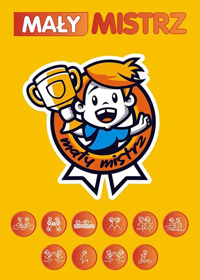 Program ten skierowany jest do dzieci z klas I-III szkół podstawowych, a jego idą jest propagowanie aktywnej postawy. Formuła "Małego Mistrza" opiera się na sześciu zasadniczych blokach sportowych z możliwością poszerzania o pokrewne dziedziny. W każdym bloku uczeń ma szansę opanowania określonych umiejętności i wiadomości, za które nagradzany jest odpowiednią odznaką. Program Małego Mistrza pomaga nauczycielom edukacji wczesnoszkolnej i współpracującym nauczycielom wychowania fizycznego w:
Program ten skierowany jest do dzieci z klas I-III szkół podstawowych, a jego idą jest propagowanie aktywnej postawy. Formuła "Małego Mistrza" opiera się na sześciu zasadniczych blokach sportowych z możliwością poszerzania o pokrewne dziedziny. W każdym bloku uczeń ma szansę opanowania określonych umiejętności i wiadomości, za które nagradzany jest odpowiednią odznaką. Program Małego Mistrza pomaga nauczycielom edukacji wczesnoszkolnej i współpracującym nauczycielom wychowania fizycznego w:
- dostosowaniu zajęć w klasach I-III do nowej podstawy programowej,
- monitorowaniu stanu zdrowia, rozwoju fizycznego i sprawności fizycznej uczniów szkół podstawowych,
- zintegrowaniu zajęć ruchowych z innymi zadaniami edukacyjnymi.
Każda szkoła w ramach programu otrzymała:
- podręczniki, legitymacje, znaczki - wlepki i inne akcesoria,
- sprzęt sportowy o wartości 1.500,00zł. Sprzęt ten jest dostosowany do wieku uczestników i ma pomóc w realizacji lekcji wychowania fizycznego,
- możliwość zatrudnienia na jedną godzinę wychowania fizycznego tygodniowo nauczyciela wychowania fizycznego, który będzie wspierać nauczyciela edukacji wczesnoszkolnej.
TENIS-10 2015
 10 września 2015 r. została podpisana umowa z Polskim Związkiem Tenisowym w której zostały ustalone warunki i zasady współpracy PZT i Gminy przy wdrażaniu programu Tenis 10 dla uczniów szkół podstawowych działających na terenie gminy Jerzmanowice-Przeginia. Jesteśmy jednym z nielicznych samorządów, które podpisały taką umowę.
10 września 2015 r. została podpisana umowa z Polskim Związkiem Tenisowym w której zostały ustalone warunki i zasady współpracy PZT i Gminy przy wdrażaniu programu Tenis 10 dla uczniów szkół podstawowych działających na terenie gminy Jerzmanowice-Przeginia. Jesteśmy jednym z nielicznych samorządów, które podpisały taką umowę.
Program "Tenis 10" został opracowany zgodnie z wytycznymi przygotowanymi przez International Tennis Federation w ramach programu "Play & Stay" oraz rekomendowanego systemu nauczania dzieci "Tennis10's". Celem programu jest przede wszystkim ujednolicenie systemu szkolenia i rywalizacji dzieci do lat 10, a także, poprzez zmianę procesu nauczania, zachęcenie do rozpoczęcia tenisowej przygody jak największej liczby dzieci. "Tenis 10" to nic innego, jak znane większości Państwu mniejsze korty i wolniejsze piłki, ale podane w uporządkowanej metodycznie formie oraz przyjemnej oprawie.
Przekonajmy najmłodszych, ich rodziców, że tenis jest łatwy, zdrowy, atrakcyjny, dostępny dla każdego i że można go uprawiać przez całe życie!
MULTISPORT 2015
 Ideą tego projektu jest organizacja i prowadzenie systematycznych, bezpłatnych zajęć pozalekcyjnych i pozaszkolnych dla dzieci i młodzieży z klas IV-VI szkół podstawowych. Zajęcia są prowadzone w różnorodnych, nowoczesnych i atrakcyjnych formach, stymulując aktywność fizyczną uczestników.
Ideą tego projektu jest organizacja i prowadzenie systematycznych, bezpłatnych zajęć pozalekcyjnych i pozaszkolnych dla dzieci i młodzieży z klas IV-VI szkół podstawowych. Zajęcia są prowadzone w różnorodnych, nowoczesnych i atrakcyjnych formach, stymulując aktywność fizyczną uczestników.
Program „MultiSport” powstał w trosce o poprawę zdolności motorycznych oraz podwyższenie poziomu sprawności fizycznej dzieci i młodzieży w Polsce. Możemy tego dokonać poprzez szereg działań, mających przede wszystkim zapoznać dzieci i młodzież z różnymi dyscyplinami sportu, zaktywizować do uprawiania rozmaitych sportów, pokazać alternatywne sposoby spędzania czasu poza zajęciami lekcyjnymi czy zachęcić do udziału w lekcjach wf.
Zajęcia prowadzone są przez osoby posiadające odpowiednie kwalifikacje i uprawnienia, zgodnie z obowiązującymi w Polsce przepisami prawa.



































































































